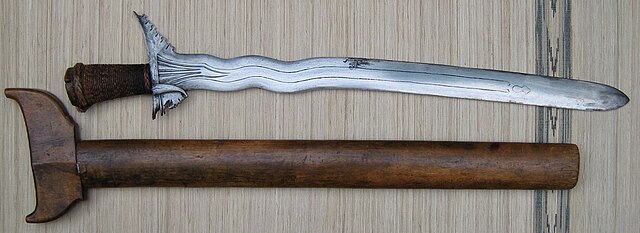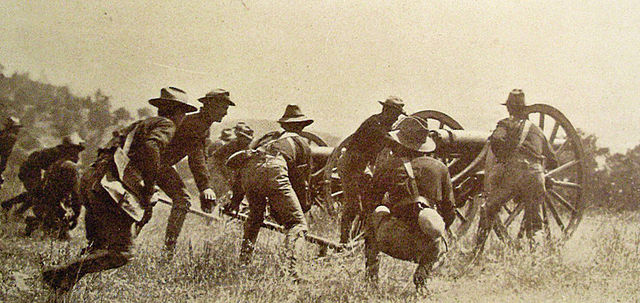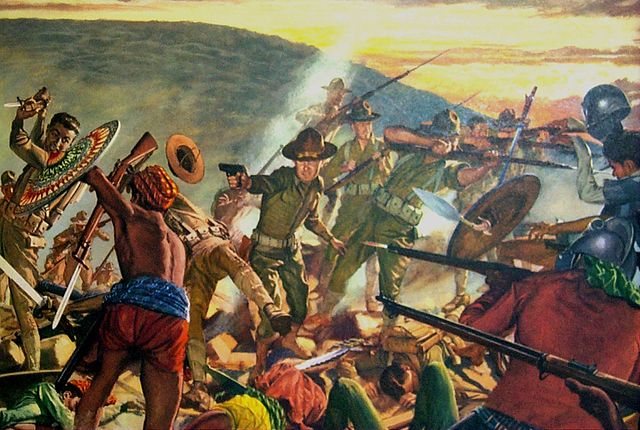The First Battle of Bud Dajo, also known as the Moro Crater Massacre, was a counterinsurgency action fought by the United States Army against the Moro people in March 1906, during the Moro Rebellion in the southwestern Philippines. Whether the occupants of Bud Dajo were hostile to U.S. forces is disputed, as inhabitants of Jolo Island had previously used the crater, which they considered sacred, as a place of refuge during Spanish assaults. Major Hugh Scott, the district governor of Sulu Province, where the incident occurred, recounted that those who fled to the crater "declared they had no intention of fighting, - ran up there only in fright, [and] had some crops planted and desired to cultivate them."
The short sword barung is the Jolo Moros' (i.e., Tausugs) national weapon
The other preferred blade of the Jolo Moros is the kalis (i.e., kris)
President Rodrigo Duterte shows images of the Bud Dajo massacre during a speech in Malacañan's Rizal Hall on September 12, 2016.
The Moro Rebellion (1899–1913) was an armed conflict between the Moro people and the United States military during the Philippine–American War.
American soldiers battling against Moro fighters
Cornelius C. Smith (far right), a recipient of the Medal of Honor, as commander of the Philippine Constabulary with Brigadier General John J. Pershing and Moro chieftains in 1910. Smith participated in expeditions against the Moro rebels for much of his time in the Philippines.
The four-day Battle of Bud Bagsak on the island of Jolo in 1913
Three Moro rebels being hanged in Jolo, 21 July 1911







